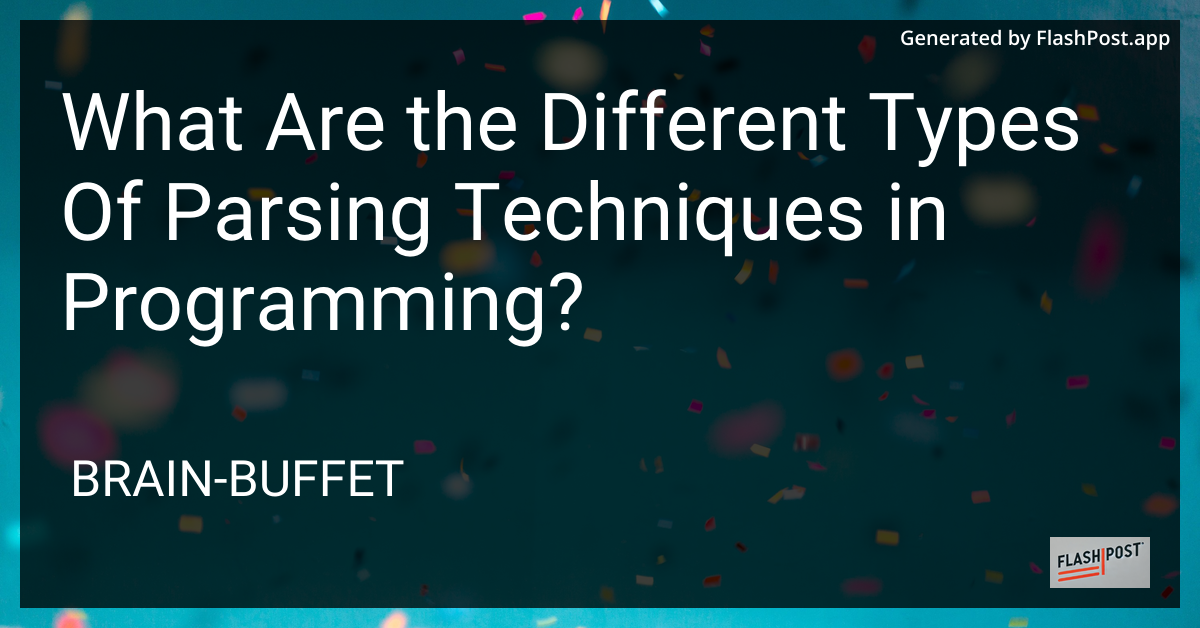What Are the Different Types Of Parsing Techniques in Programming?

Parsing is a fundamental concept in programming and software development. It involves analyzing a sequence of symbols, such as the source code of a programming language, to determine its grammatical structure. Parsing is crucial for interpreting and compiling code, executing commands, and processing data. There are various parsing techniques, each with its own set of use cases and advantages. Let's delve into the different types of parsing techniques that programmers use.
Types of Parsing Techniques
1. Top-Down Parsing
Top-down parsing constructs the parse tree from the top (root) and moves down to the leaves. It uses the grammar rules to expand the start symbol to generate an input string.
Recursive Descent Parsing: A type of top-down parser that uses a set of recursive procedures to process the input. It is simple to implement but not efficient for complex languages due to backtracking.
Predictive Parsing: An optimized form of recursive descent parsing that eliminates backtracking by using a look-ahead pointer to predict which production to use. It requires the grammar to be free from left recursion or ambiguity.
2. Bottom-Up Parsing
Bottom-up parsing starts from the leaves and works up to build the parse tree. It reduces the input string to the start symbol by inverting the process used in productions.
Shift-Reduce Parsing: This technique uses a stack to hold grammar symbols and an input buffer. It either shifts the input onto the stack or reduces the stack by the reverse of a production.
LR Parsing: Stands for Left-to-right scanning with Rightmost derivation in reverse. It's a more powerful and efficient technique that constructs the parse tree using a set of states and a parsing table. Variants include SLR, LALR, and Canonical LR parsers.
3. Chart Parsing
Primarily used in natural language processing, chart parsing uses a data structure called a chart to represent subtrees of the parse tree. It efficiently handles ambiguity and is particularly suitable for context-free grammars.
4. Recursive Parsing
Often used in functional programming languages, this method breaks down a problem into simpler sub-problems, calling itself with progressively simpler inputs until reaching a base case.
5. Data-driven Parsing
This dynamic technique uses statistical models, such as machine learning algorithms, to parse input based on learned patterns. It is popular in natural language processing for tasks like sentence structure prediction.
Practical Applications of Parsing
To understand how these parsing techniques are applied, consider the following examples:
- Parsing Command Line Arguments in Prolog
- Prolog Parsing
- Single Line Parsing in Regex
- FastAPI Request Parsing
Conclusion
Understanding different parsing techniques is crucial for developers dealing with compilers, interpreters, and data processing tools. Each technique has its strengths and is selected based on the specific needs and constraints of a project. Whether dealing with complex programming languages or simple data formats, mastering parsing techniques can greatly enhance a programmer’s toolkit. ```